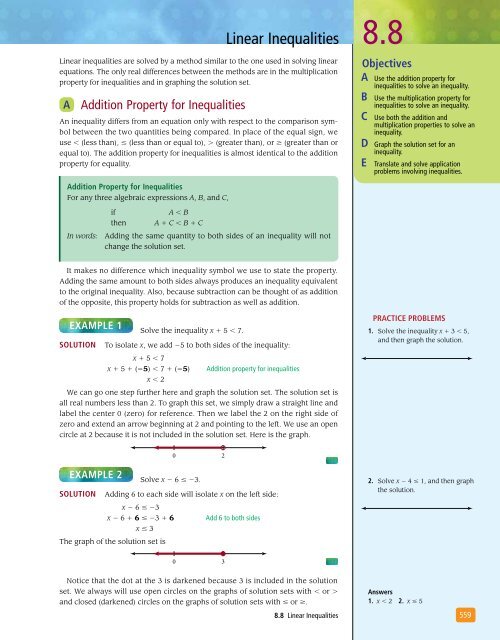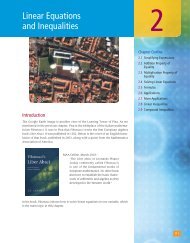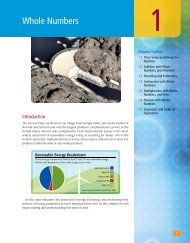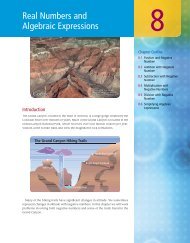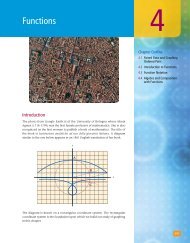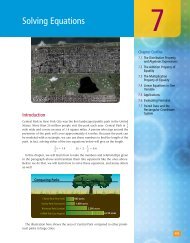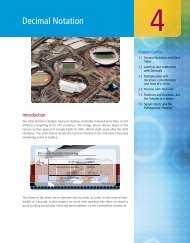Chapter 8 - XYZ Custom Plus
Chapter 8 - XYZ Custom Plus
Chapter 8 - XYZ Custom Plus
Create successful ePaper yourself
Turn your PDF publications into a flip-book with our unique Google optimized e-Paper software.
Linear Inequalities 8.8Linear inequalities are solved by a method similar to the one used in solving linearequations. The only real differences between the methods are in the multiplicationproperty for inequalities and in graphing the solution set.A Addition Property for InequalitiesAn inequality differs from an equation only with respect to the comparison symbolbetween the two quantities being compared. In place of the equal sign, weuse < (less than), ≤ (less than or equal to), > (greater than), or ≥ (greater than orequal to). The addition property for inequalities is almost identical to the additionproperty for equality.ObjectivesA Use the addition property forinequalities to solve an inequality.B Use the multiplication property forinequalities to solve an inequality.C Use both the addition andmultiplication properties to solve aninequality.D Graph the solution set for aninequality.ETranslate and solve applicationproblems involving inequalities.Addition Property for InequalitiesFor any three algebraic expressions A, B, and C,ifA < Bthen A + C < B + CIn words: Adding the same quantity to both sides of an inequality will notchange the solution set.It makes no difference which inequality symbol we use to state the property.Adding the same amount to both sides always produces an inequality equivalentto the original inequality. Also, because subtraction can be thought of as additionof the opposite, this property holds for subtraction as well as addition.Example 1Solve the inequality x + 5 < 7.Solution To isolate x, we add −5 to both sides of the inequality:x + 5 < 7x + 5 + (−5) < 7 + (−5) Addition property for inequalitiesx < 2We can go one step further here and graph the solution set. The solution set isall real numbers less than 2. To graph this set, we simply draw a straight line andlabel the center 0 (zero) for reference. Then we label the 2 on the right side ofzero and extend an arrow beginning at 2 and pointing to the left. We use an opencircle at 2 because it is not included in the solution set. Here is the graph.Practice Problems1. Solve the inequality x + 3 < 5,and then graph the solution.0 2Example 2Solve x − 6 ≤ −3.Solution Adding 6 to each side will isolate x on the left side:x − 6 ≤ −3x − 6 + 6 ≤ −3 + 6 Add 6 to both sidesx ≤ 3The graph of the solution set is2. Solve x − 4 ≤ 1, and then graphthe solution.0 3Notice that the dot at the 3 is darkened because 3 is included in the solutionset. We always will use open circles on the graphs of solution sets with < or >and closed (darkened) circles on the graphs of solution sets with ≤ or ≥.8.8 Linear InequalitiesAnswers1. x < 2 2. x ≤ 5559


